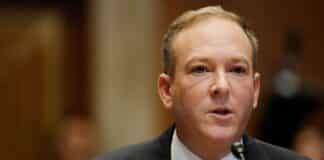As Labor Day weekend comes to a close, so too will expanded unemployment benefits for millions of people across the country.
The pandemic-tethered benefits were extended by the Biden administration in March as part of President Joe Biden’s American Rescue Plan and Republicans soon began crying foul as more people got vaccinated yet shortages in the labor market increased. The GOP and some economists say that the shortages have worsened because workers have opted to live off the benefits rather than find employment.
The programs that are ending include one that extended the length of regular unemployment benefits, the Pandemic Unemployment Assistance program, which covered some 4.2 million self-employed and gig workers who don’t qualify for regular benefits, and supplemental federal benefits that added $300 on to whatever unemployment states were offering.
The $300 payments stacked on top of state benefits made it so that, in some instances, people could receive much more money by being unemployed than they would working at a minimum-wage job.
The national average of statewide unemployment insurance before the pandemic was $387 per week, meaning some unemployed people in the United States were bringing in $687 per week on average with the $300 expansion — that equates to a $17.17 hourly wage, more than double the federal minimum wage.
The cessation of the expanded programs will largely affect those in states run by Democrats, as more than two dozen states, mostly with Republican governors, have already ended the benefits early in an effort to encourage people to find jobs.
The end of the benefits comes just after the August jobs report was released on Friday. The report fell far short of expectations and added to Republican criticism that there is a major labor shortage and the economy is not recovering from its pandemic-induced slump as robustly as it should be.
The economy added just 235,000 new jobs in August, much fewer than the 750,000 that economists had projected.
Rep. Kevin Brady, the ranking Republican on the Ways and Means Committee, told the Washington Examiner during a Friday interview that he was not surprised by the weaker-than-anticipated results.
“President Biden has effectively created a workerless recovery,” the Texas Republican said. “Our businesses are fighting to fill jobs and families are struggling with rising prices.”
Brady said that payments were keeping workers on the sidelines, and because Texas ended the benefits early, he said, his office is seeing an uptick in people applying, interviewing, and showing up for jobs.
Goldman Sachs released an analysis that concluded some 1.5 million people will be prompted to take jobs by the end of the year because of the Labor Day conclusion of the federal expanded unemployment benefits.
Goldman Sachs also projected that if the entire country had ended the benefits prematurely, July would have seen 400,000 more filled jobs.
Similarly, a comprehensive study released late last month by Arindrajit Dube, a University of Massachusetts economist, along with other researchers, did find modest increases in employment in states that prematurely terminated benefits. The researchers examined 22 states that had cut off the pandemic benefits in June and found that ending the expanded unemployment perks increased employment by 4.4%.
It also found that it decreased unemployment insurance recipiency among those who were unemployed and receiving benefits in April by 35%.
Despite that, Dube said that the study revealed the notion that removing the benefits would unleash a torrent of job applications was overblown.
“The idea was that there were lots of jobs — it was just that people weren’t looking. That was the narrative,” he told the New York Times. “I don’t think that story holds up.”
A recent Wall Street Journal analysis of Labor Department data found that nonfarm payrolls rose 1.37% from April to July in the states that retained the benefits compared to 1.33% in those that ended the benefits early.
During a phone call with the Washington Examiner, former Secretary of Labor Elaine Chao said the cessation of benefits should have a positive effect on the job market because it will encourage some people to reenter the labor market and try to attain employment again.
“We all want good-paying jobs, better jobs, and more jobs, but when the government incentives are to the contrary or persuading people to stay home because it’s more lucrative for them, that’s a rational decision,” she said. “Work is good, it gives us purpose, it gives us dignity, and it increases our self-esteem.”
With the conclusion of the expanded unemployment insurance, some Republicans are now eyeing another factor that they believe could be keeping jobs at bay — the expanded child tax credit .
As part of the COVID-19 relief package, Democrats expanded the child tax credit by increasing the money that families received from up to $2,000 per child to $3,600 for children under 6 years old and $3,000 for older children. The biggest change, though, was that even a parent who was not working and had zero income could get the entire sum of the Democratic expansion, a move Republicans say is akin to welfare without work.
The system also switched to providing families with monthly payments, usually disbursed by the government via direct deposit. The first round of payments began going out in mid-July.
Brady said that about a month ago his office began to start hearing from businesses in his district who complained that the revamped child tax credits were hitting bank accounts and causing workers to leave their jobs.
It will remain to be seen to what extent the cutoff of the expanded unemployment benefits will have on the job market, but the U.S. will likely get its first glimpse when the September jobs report is released on Oct. 8.






